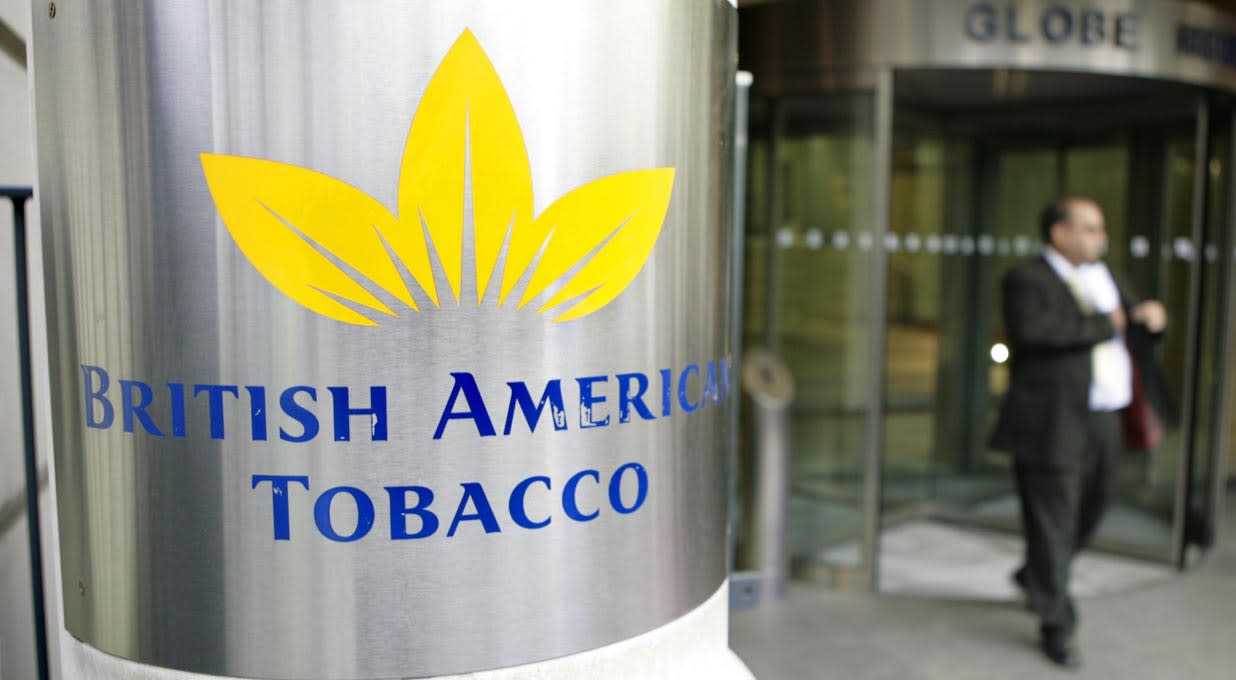British American Tobacco’s first half revenue was down 0.8% on an organic basis to £12.3bn, ignoring the impact of currency movements.
Sales of traditional combustible products were down 2.6% where strong pricing was not enough to counter a 6.9% fall in volumes. The lower revenues from this category were partly offset by a 7.4% increase in New Categories.
Underlying operating profit fell 0.9% to £5.8bn in line with lower sales levels. Free cash flow fell from $2.3bn to $2.1bn, feeling the impact from the exit from the group’s Russian operations. Underlying net debt fell by 12.4% to $33.0bn.
There were no changes to full year guidance. But the group now see the achievement of its £5bn revenue ambition for New Categories next year as unlikely, calling out lack of enforcement against illicit single-use vapour products in the U.S as a challenge.
The shares were up 2.8% following the announcement.
Our view
British American Tobacco’s third-quarter results showed it’s doing a good job of navigating a tricky environment, and the market showed some relief that a stronger second half is expected to drive modest growth over the full year.
The company’s fighting hard to maintain market share in traditional combustible products (cigarettes and cigars) in its largest market, the United States. This is proving challenging, and it's weighing on financial performance. In other territories, the picture looks brighter.
The group was early to recognise changes in consumer behaviour and is increasingly pinning its hopes for the future on its portfolio of 'smokeless' products, namely vapes, heated tobacco and oral pouches. We're impressed by the progress made so far. The so called ‘New Categories’ are finally contributing to the bottom line, albeit in a small way. There's now a target in place for them to generate over half of total revenues by 2035. We admire the ambition, but there will be challenges along the way.
There is some evidence to suggest that these products pose a reduced health risk compared to cigarettes, but they are coming under increasing scrutiny with some products banned in the US earlier this year. There's also mounting pressure for higher taxes going forward.
The company itself has called out the trade in illicit disposable devices as an immediate concern, putting the divisions £5bn revenue target for 2025 in doubt. It's too early to call how the long-term profitability of these products will compare to traditional products. This could undermine BATS' attractive operating margins which have remained over 40% despite recent market challenges and the spike in inflation.
Consistently high cash flows do mean that the company is well placed to make the investments necessary to keep pivoting away from cigarettes. That also supports a dividend yield of around 9%.
The part sale of the stake in India's ITC, raised proceeds of nearly £1.6bn, which are being returned to shareholders through share buy-backs. Selling down the remaining stake or meeting target debt levels of 2-2.5x underlying cash profit (EBITDA) could see a further step up in shareholder payouts. There can be no guarantees of payouts to shareholders.
While the valuation has recovered a little from recent lows, the yield remains a key lure for investors. There's still a job to be done to convince investors that New Categories can underpin BATS' future. Successful execution of the strategy could well drive a re-rating. But there are likely to be more bumps along the way, so investors need to be prepared for some volatility.
Environmental, social and governance (ESG) risk
The food and beverage industry tends to be medium-risk in terms of ESG though some segments like agriculture, tobacco and spirits fall into the high-risk category. Product governance is a key risk industry wide especially in areas with strict quality and safety requirements. Labour relations and supply chain management are also industry wide risks, with other issues varying by sub-sector.
According to Sustainalytics, BATS' overall management of ESG issues is strong. But we do have some concerns. Recent controversies include accusations of using corporate social responsibility activities to influence government officials and bypass tobacco policies. With tobacco being on the exclusion list of certain institutional investors, product impact is key and the company's commitment to public health.
British American Tobacco key facts
All ratios are sourced from Refinitiv, based on previous day’s closing values. Please remember yields are variable and not a reliable indicator of future income. Keep in mind key figures shouldn’t be looked at on their own – it’s important to understand the big picture.
This article is not advice or a recommendation to buy, sell or hold any investment.No view is given on the present or future value or price of any investment, and investors should form their own view on any proposed investment.This article has not been prepared in accordance with legal requirements designed to promote the independence of investment research and is considered a marketing communication.Non - independent research is not subject to FCA rules prohibiting dealing ahead of research, however HL has put controls in place(including dealing restrictions, physical and information barriers) to manage potential conflicts of interest presented by such dealing.Please see our full non - independent research disclosure for more information.


